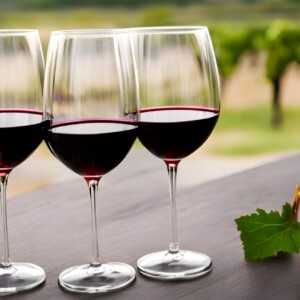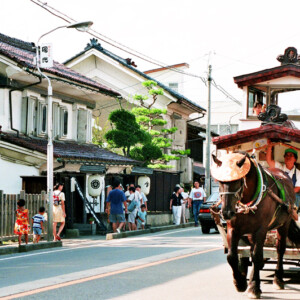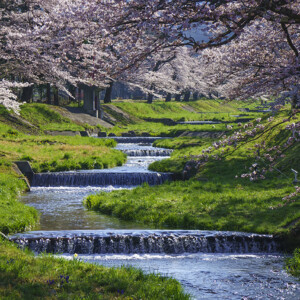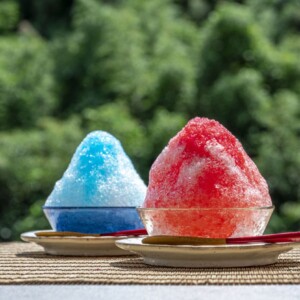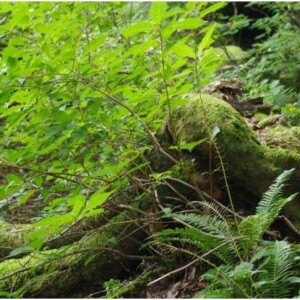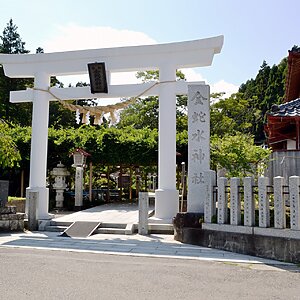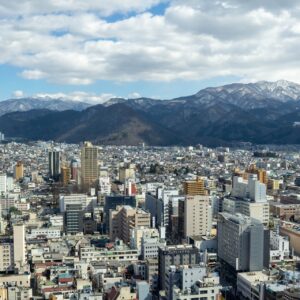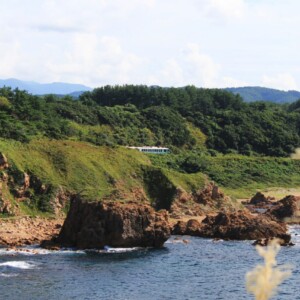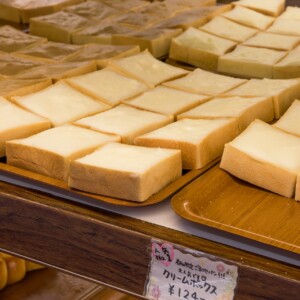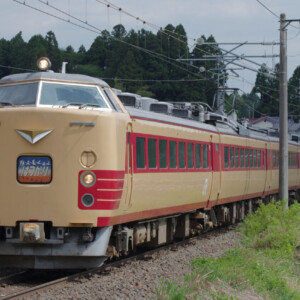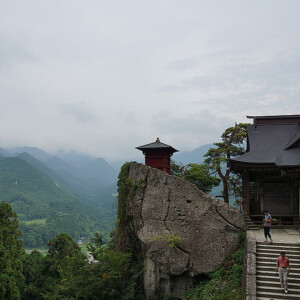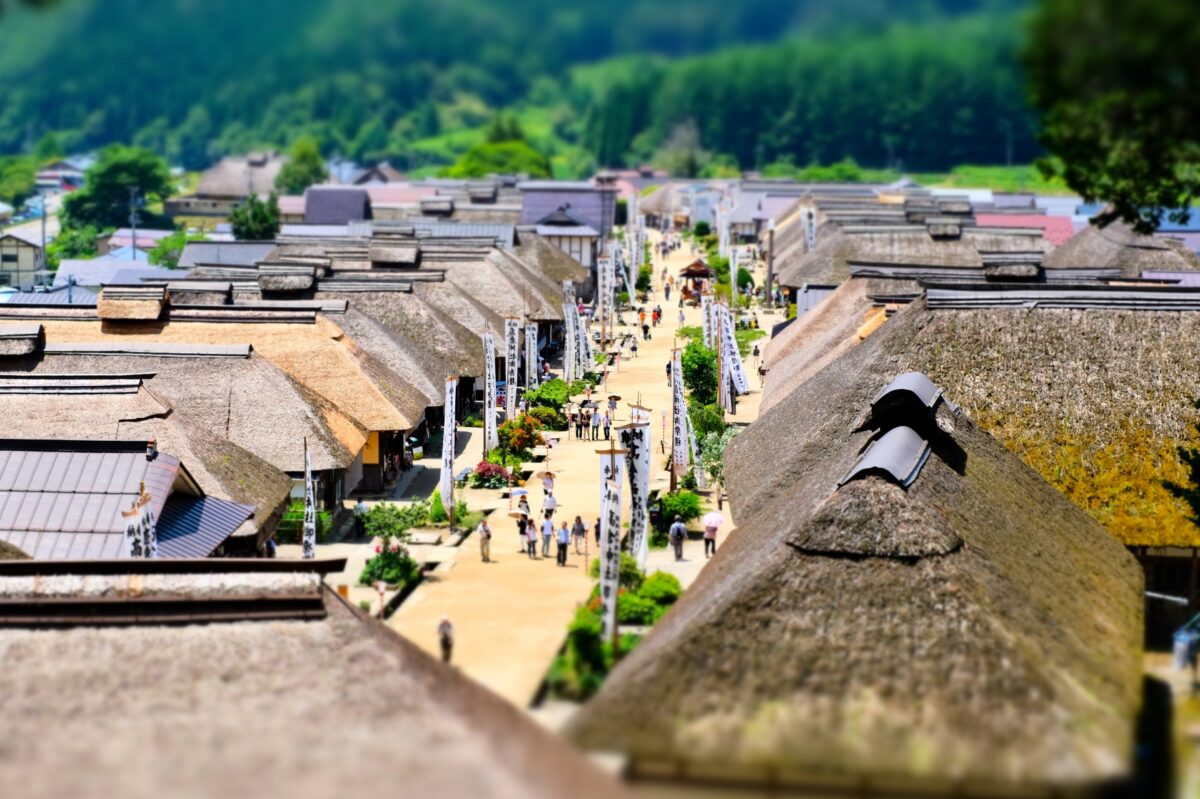
[Fukushima Prefecture] Ouchi-juku, a post town that is full of Aizu's history and landscapes
table of contents
Located in Shimogo Town, Minamiaizu District, Fukushima Prefecture, Ouchijuku is one of the most important traditional building preservation districts that retain the reminiscent of the Edo period
It once flourished as a post town on the Shimotsuke Kaido (Aizu Nishi Kaido), which connects Aizuwakamatsu and Nikko Imaichi, and even today the landscape is maintained with a line of thatched roofed houses.
It is a popular tourist destination that is visited by domestic and international tourists all year round.
What kind of place is Ouchijuku?
The development of Ouchijuku was developed in the early Edo period , especially in relation to the Tokugawa Shogunate's sankinkota system It served as a post town as a key transportation destination used by the Aizu Domain lords and visitors from Edo and Oshu.
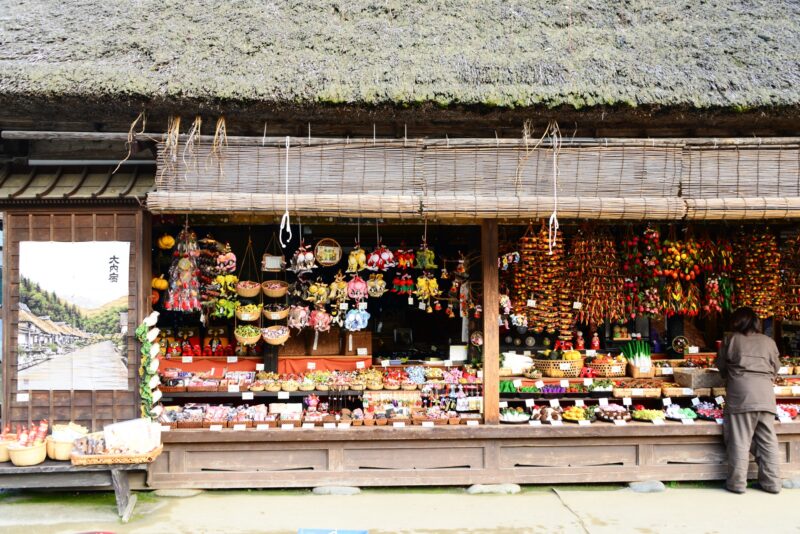
At that time, Ouchi-juku was lined with inns, tea houses, merchants, and more, and buildings that resemble the townscape of the time have been preserved and restored, allowing you to experience the post town itself.
A particularly distinctive feature is the thatched roof architecture , which recreates the style of a private house from the Edo period to the Meiji period, and is highly regarded historically due to its good preservation.
Reconstruction and landscape conservation through local efforts
From the 1960s to the 1970s, depopulation in the countryside progressed, and Ouchijuku was in danger of decline for a while. However, the efforts of local residents and local governments a reassessment of its tourist resources , and in 1981 it was selected as important traditional building preservation district
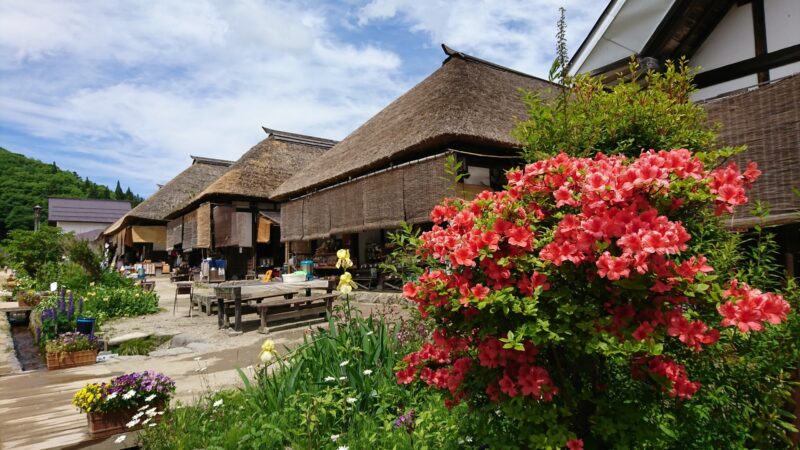
This preservation activity has created undergrounding of electric wires, unifying the exterior, and repairing thatched roofs, and maintaining the current beautiful landscape. There are still about 30 thatched roof houses lined up, each operating as souvenir shops, soba restaurants, and guesthouses.
Sightseeing and experiences
The hilltop "Miharudai" located at the southern tip of the village offers a panoramic view of the thatched rooftop cityscape, making it a popular spot for spectacular views throughout the seasons. In winter, the fantastic view of the post town floating in the snowy scenery is spread out, making it a great subject for photography enthusiasts.
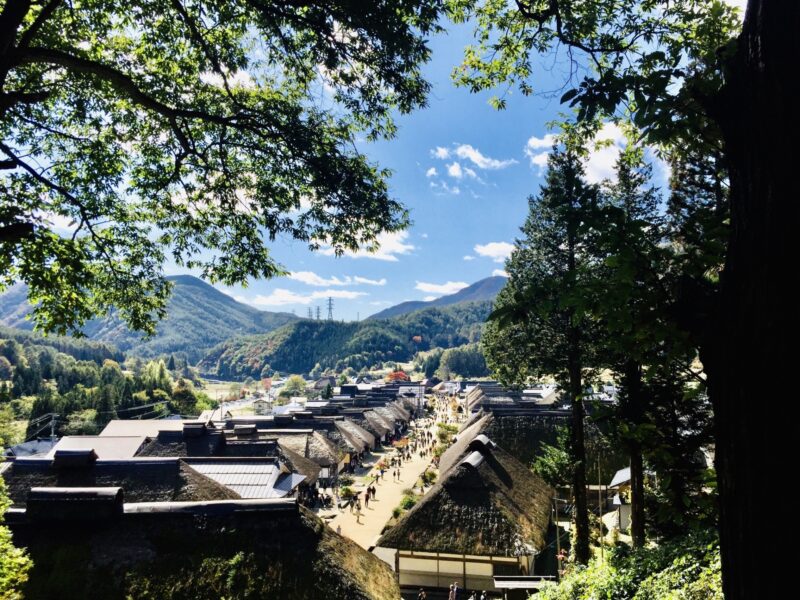
Furthermore, many of the buildings in the post town actually houses where they live , and also function as shops and guesthouses, and one of the charms of Ouchi-juku is that traditional lifestyles and tourism coexist
Origin and historical background of the famous "Negisoba"
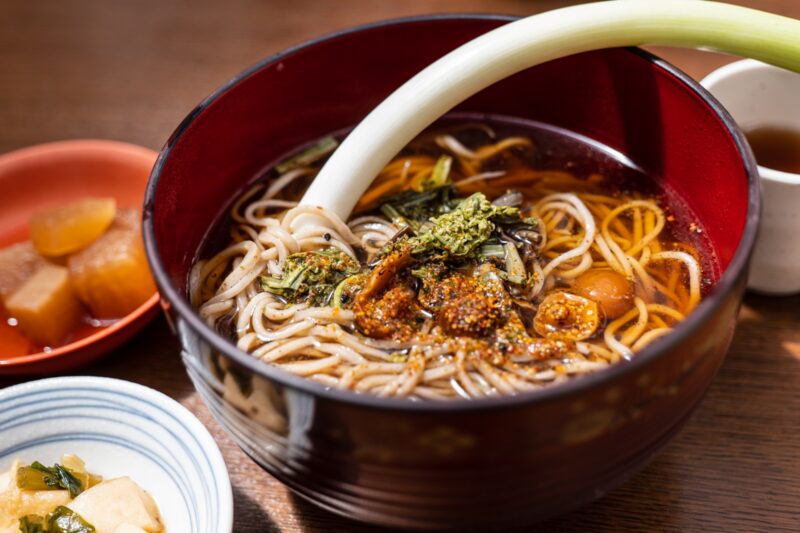
When it comes to Ouchijuku's specialty dishes, "negisoba" . The biggest feature of this soba noodles is its unique style which uses a single long green onion instead of chopsticks, and is used as a condiment This quirky way of eating catches the eye of tourists and is often featured on television programs and social media, making it a popular sight to see the name Ouchijuku all over the country.
In fact, this "negisoba" is said to have its roots in "Takato Soba" which was brought to mind from the Takato Domain in Shinshu (now Nagano Prefecture).
During the Edo period, when Hoshina Masayuki, a native of the Takato Domain (Shinshu), was transferred as the lord of the Aizu Domain , brought Shinshu culture to the Aizu region. that this also included the spicy soba culture, which used grated radish and green onions as condiments Takato Soba is characterized by the "karatsuyu" that uses thinly sliced radish and chopped green onions in soba soup, and is believed to have been fused with the Aizu climate and transformed into the current "negisoba."
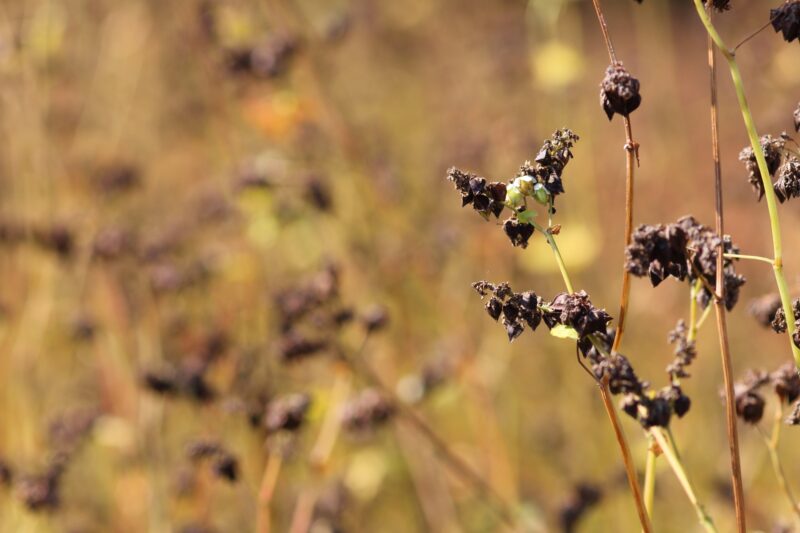
Also, around Ouchijuku, soba has been cultivated since ancient times as a crop suitable for local cold-climate agriculture It is said that, in conjunction with this climate, the playful way to serve the food, such as "eating it using green onions," has become a tourist resource.
summary
Ouchijuku is a valuable historical space where you can experience the "Aizu in Edo. The townscape has been nurtured with people's lives for hundreds of years, and is still exploring new forms of tourism.
also a pioneering example of the movement to preserve the historic townscapes in Japan , and is preserved in a way that residents "protect while living" and is attracting attention as a model case for future townscape conservation.
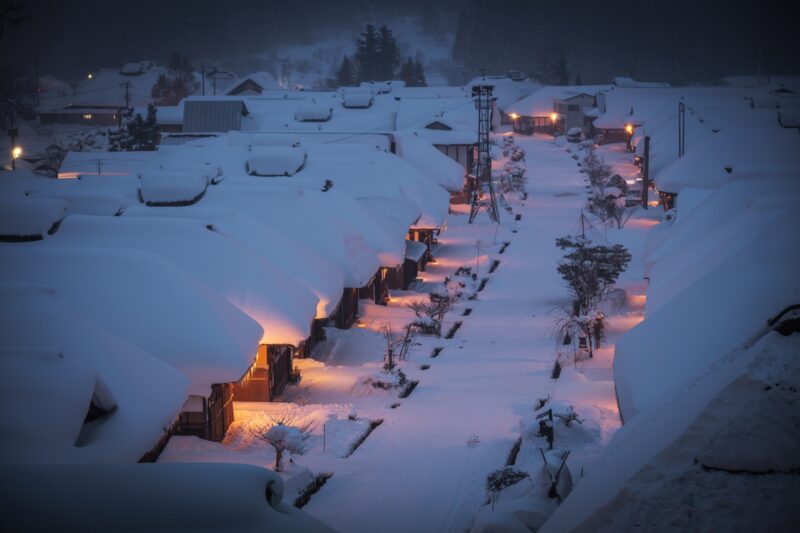
Learn about history, taste culture, and enjoy nature with the changing seasons. All of this brings together a "nostalgia and surprise" to visitors. That is the true value of "Ouchijuku".
Ouchi-juku<Information>
- Name: Ouchijuku (National Important Traditional Building Preservation Area)
- Address: Ouchi, Shimogo-cho, Minamiaizu-gun, Fukushima 969-5207
- Phone number: 0241-68-3611 (Ouchijuku Tourism Association)
- Official URL: https://ouchi-juku.com/




![[Minamiaizu District, Fukushima Prefecture] The abundance of hot springs in the Nasu volcanic belt is attractive. ``Yunokami Onsen'' is a base for sightseeing in ``Ouchi-juku'' and ``Tanohetsuri.'' 22875645 m](https://jp.neft.asia/wp-content/uploads/2022/08/22875645_m-150x150.jpg)
![[Minamiaizu, Fukushima Prefecture] Enjoy "Takato Soba" at Ouchi-juku! Takato soba (negi soba) in Ouchi-juku](https://jp.neft.asia/wp-content/uploads/2017/01/24446478_m-150x150.jpg)
![I traveled back in time to the Edo period at Ouchi-juku! [Fukushima Prefecture] Panoramic view of Ouchi-juku](https://jp.neft.asia/wp-content/uploads/2018/03/IMG_89061-150x150.jpg)
![[Shimogo Town, Fukushima Prefecture] Recommended for the autumn leaves season! Walking around Kannonuma Forest Park kannonnumashinrinkoen05](https://jp.neft.asia/wp-content/uploads/2023/09/kannonnumashinrinkoen05-150x150.jpg)
![Takakura Shrine, a hidden power spot in Ouchijuku [Fukushima Prefecture] Takakura Shrine (Ouchi-juku)](https://jp.neft.asia/wp-content/uploads/2024/10/PXL_20240920_070755942-EDIT-150x150.jpg)
![[Tenei Village, Fukushima Prefecture] Two hot spring inns with thatched roofs. ``Iwase Yumoto Onsen'' full of nostalgic atmosphere 1908-000](https://jp.neft.asia/wp-content/uploads/2022/08/1908-000-150x150.jpg)
![The Aizu Tajima Gion Festival is famous for Japan's number one bride line [Minami Aizu Town, Fukushima Prefecture] Aizu Tajima Gion Festival](https://jp.neft.asia/wp-content/uploads/2022/10/1_ccc5e365-9269-483b-b9a4-f53bf9d88c81-x2.jpg-150x150.webp)
![A tour of precious cultural assets that remain in Minami Aizu, the southern part of the Aizu region [Fukushima Prefecture] 002402574](https://jp.neft.asia/wp-content/uploads/2022/11/002402574-150x150.jpg)
